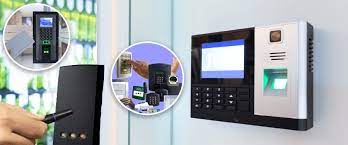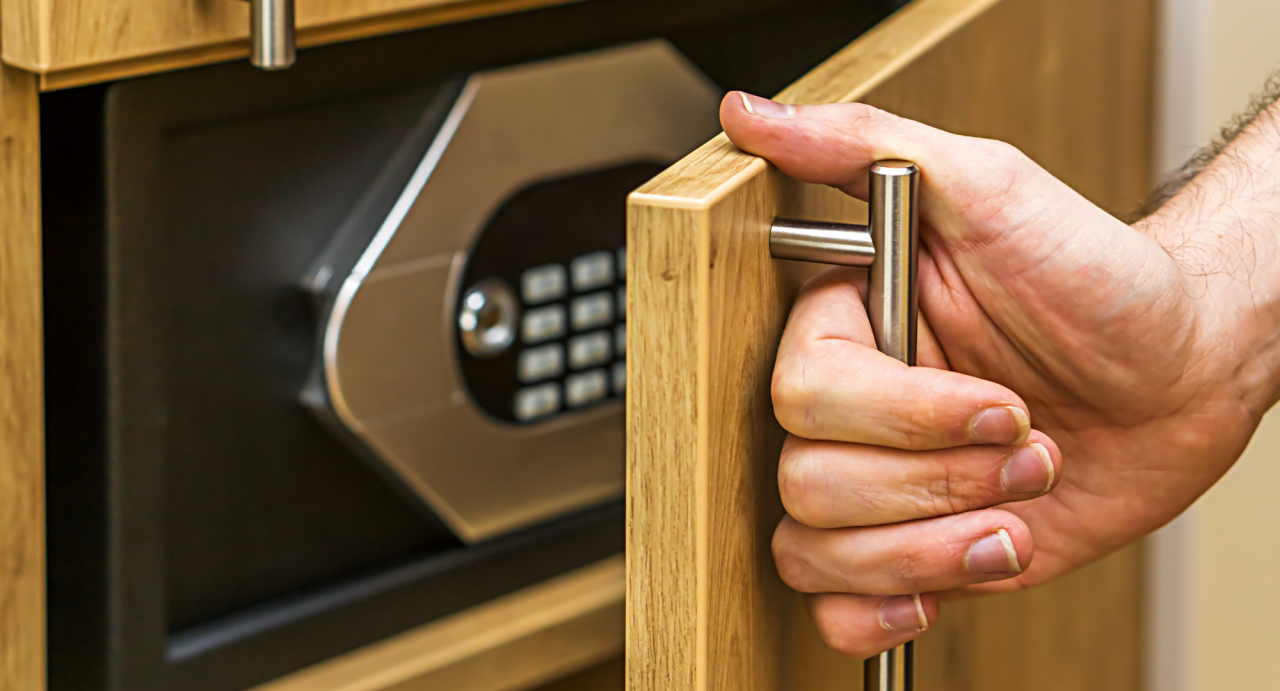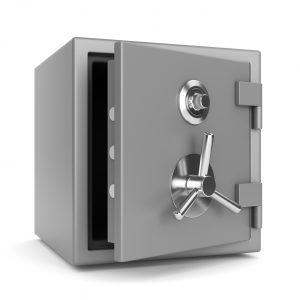In the realm of commercial property management, ensuring the security and safety of assets, personnel, and sensitive information is paramount. Access control systems stand at the forefront of modern security solutions, offering robust mechanisms to regulate entry and monitor activities within commercial premises. These systems have evolved significantly, leveraging cutting-edge technologies to provide efficient and effective access management solutions.
Access control systems for commercial properties encompass a diverse range of hardware and software components, each designed to authenticate, authorize, and track entry and exit activities. From traditional card-based systems to advanced biometric solutions and mobile-based access control, the options are extensive, catering to the unique needs and preferences of different businesses.
This comprehensive guide delves into the intricacies of access control systems for commercial properties, exploring their types, components, key features, benefits, implementation considerations, and future trends. By understanding the significance and capabilities of these systems, commercial property managers can make informed decisions to enhance security, streamline operations, and safeguard valuable assets.
Learn more about Overview of Access Control System Capabilities for Managing Security & Access.
Types of Access Control Systems
Card-Based Access Control Systems
Card-based access control systems utilize physical cards or key fobs containing embedded credentials to grant or deny access to individuals. These credentials are typically encoded with unique information that is read by card readers installed at entry points. Users present their cards to the reader, which then communicates with the access control panel to verify the credentials and determine whether access should be granted. Card-based systems offer convenience and flexibility, allowing for easy issuance, replacement, and revocation of access credentials.
Biometric Access Control Systems
Biometric access control systems rely on unique biological characteristics, such as fingerprints, iris patterns, or facial features, to authenticate individuals. Biometric readers capture and analyze these physiological traits to verify identity and grant access accordingly. Biometric systems offer high levels of security and accuracy, as each individual possesses distinct biometric characteristics. Additionally, they eliminate the need for physical tokens like cards or keys, reducing the risk of unauthorized access due to lost or stolen credentials.
Keypad/PIN Access Control Systems
Keypad/PIN access control systems require users to input a predefined numeric code or PIN (Personal Identification Number) to gain access. Access control panels are equipped with keypads or touchscreens where users enter their unique codes. The system then compares the entered PIN with stored data to authenticate the user’s identity and determine access permissions. Keypad/PIN systems offer simplicity and cost-effectiveness, making them suitable for smaller commercial properties or areas with low to moderate security requirements.
Proximity Access Control Systems
Proximity access control systems utilize proximity cards or key fobs that communicate with card readers via radio frequency (RF) signals. When a user approaches the reader with their proximity card or fob, the reader detects the signal and verifies the credential stored on the card. Proximity systems offer quick and convenient access without the need for physical contact, making them ideal for high-traffic areas or environments where speed is essential. They also provide enhanced security compared to traditional key-based systems, as credentials cannot be easily duplicated or forged.
Mobile-Based Access Control Systems
Mobile-based access control systems leverage smartphones or other mobile devices as access credentials. Users download a mobile app that contains their digital credentials, which are transmitted to access control readers via Bluetooth or NFC (Near Field Communication) technology. Mobile-based systems offer unparalleled convenience and flexibility, as users can access authorized areas using their smartphones without the need for additional physical tokens. Additionally, they enhance security by enabling multi-factor authentication methods and remote access management capabilities.
Components of Access Control Systems
Access Control Panels
Access control panels serve as the central hubs of access control systems, managing the authentication and authorization processes. These panels are responsible for processing user credentials, determining access permissions, and controlling the operation of door locking mechanisms. Access control panels communicate with credential readers and other system components to regulate entry and exit activities within a commercial property. They also store user data, access logs, and system configurations, providing administrators with centralized control and oversight.
Credential Readers
Credential readers are devices installed at entry points, such as doors or gates, to authenticate individuals seeking access. Depending on the type of access control system, credential readers may include card readers, biometric scanners, keypad interfaces, or proximity sensors. These readers capture and verify user credentials, such as card data, biometric information, or PIN codes, and transmit this data to the access control panel for processing. Credential readers play a crucial role in determining whether access should be granted or denied based on the provided credentials.
Door Locking Mechanisms
Door locking mechanisms are physical devices installed on doors or gates to control access to specific areas within a commercial property. These mechanisms may include electric strikes, magnetic locks, door strikes, or electronic locks that can be remotely operated by the access control system. Door locking mechanisms interface with the access control panel, receiving commands to either lock or unlock doors based on authorized access permissions. They provide an additional layer of security by physically restricting entry to unauthorized individuals.
Access Cards, Fobs, or Tokens
Access cards, fobs, or tokens are physical or digital credentials issued to authorized individuals for access to secured areas within a commercial property. These credentials may be in the form of proximity cards, smart cards, key fobs, or digital tokens stored on mobile devices. Access cards contain unique identifiers or encrypted data that are read by credential readers to authenticate users and grant access. Access cards, fobs, or tokens are essential components of access control systems, enabling users to prove their identity and gain entry to authorized areas.
Management Software
Management software serves as the administrative interface for configuring, monitoring, and managing access control systems. This software allows administrators to define access policies, enroll users, assign access permissions, and generate access reports. Management software provides real-time visibility into access events, allowing administrators to track user activities, review access logs, and respond to security incidents. Additionally, management software may include features for integrating with other security systems, conducting system diagnostics, and performing software updates to ensure the optimal performance of the access control system.
Key Features of Access Control Systems
Authentication Methods
Authentication methods refer to the mechanisms used to verify the identity of individuals seeking access to secured areas. Access control systems employ various authentication methods, including:
- Biometric authentication: Verifying identity based on unique biological traits such as fingerprints, iris patterns, or facial features.
- Card-based authentication: Authenticating users using physical cards or key fobs containing encoded credentials.
- Keypad/PIN authentication: Requiring users to input a numeric code or PIN to authenticate their identity.
- Mobile-based authentication: Using smartphones or mobile devices as access credentials, often via Bluetooth or NFC technology.
- Multi-factor authentication: Combining two or more authentication factors (e.g., biometric and PIN) for enhanced security.
Authorization Levels
Authorization levels define the access permissions granted to individuals based on their role, responsibilities, or specific criteria. Access control systems allow administrators to assign authorization levels to users, specifying which areas or resources they are permitted to access. Common authorization levels include:
- Admin: Full access privileges, including the ability to modify system settings and grant or revoke access permissions.
- Manager: Access to designated areas or resources within the organization, typically related to their managerial role.
- Employee: Limited access to specific work areas or facilities required for job duties.
- Visitor: Temporary access granted to guests or visitors for a specified duration or purpose.
Audit Trails and Monitoring
Audit trails and monitoring capabilities enable access control systems to track and record user activities in real-time. These features capture detailed information about access events, including user identities, timestamps, and accessed areas. Audit trails provide valuable insights into security incidents, unauthorized access attempts, and compliance violations. Access control systems may offer customizable reporting tools, alerts, and notifications to help administrators monitor and analyze access activities effectively.
Integration Capabilities
Integration capabilities allow access control systems to seamlessly integrate with other security systems and technologies within a commercial property. Access control systems may integrate with:
- Video surveillance systems: Providing synchronized monitoring and recording of access events for enhanced security.
- Intrusion detection systems (IDS): Coordinating response efforts to security breaches and triggering alarms in case of unauthorized entry.
- Building automation systems: Enabling centralized control and management of access control, lighting, HVAC, and other building systems.
- Identity management systems: Syncing user data and access permissions across multiple platforms for streamlined administration.
Scalability and Flexibility
Scalability and flexibility refer to the ability of access control systems to accommodate changing organizational needs, growth, and evolving security requirements. Key features include:
- Scalable architecture: Supporting the addition of new users, access points, or system components without significant disruptions or performance degradation.
- Flexible configuration options: Allowing administrators to customize access policies, user permissions, and system settings to meet specific business requirements.
- Modular design: Offering modular hardware and software components that can be easily upgraded or expanded as needed to adapt to future challenges or advancements in technology.
Benefits of Access Control Systems
Enhanced Security
Access control systems provide robust security measures to protect commercial properties, assets, and personnel from unauthorized access and security breaches. By implementing authentication methods, authorization levels, and audit trails, these systems help prevent unauthorized entry, deter intruders, and mitigate security risks. Enhanced security measures contribute to a safer and more secure environment for employees, customers, and visitors.
Improved Access Management
Access control systems streamline access management processes by centralizing control and administration of access permissions. Administrators can easily assign, modify, or revoke access privileges for individual users or groups based on their roles, responsibilities, or changing needs. Improved access management ensures that only authorized individuals have access to designated areas or resources, reducing the risk of security incidents and ensuring compliance with security policies.
Increased Efficiency and Productivity
Access control systems optimize access workflows and minimize manual intervention, resulting in increased efficiency and productivity within commercial properties. By automating access control processes, such as credential verification and door locking/unlocking, these systems reduce wait times, eliminate bottlenecks, and streamline entry and exit procedures. Employees can focus on their tasks without interruptions, leading to improved productivity and workflow efficiency.
Remote Access Control
Access control systems offer remote access control capabilities, allowing administrators to manage access permissions and monitor activities from anywhere, at any time. Through web-based interfaces or mobile applications, administrators can remotely grant or revoke access, review access logs, and receive real-time notifications of security events. Remote access control enhances flexibility and responsiveness, enabling administrators to address security concerns promptly and effectively.
Compliance with Regulatory Requirements
Access control systems help commercial properties achieve compliance with regulatory requirements and industry standards related to security and access management. By implementing robust authentication methods, audit trails, and access control policies, businesses can demonstrate adherence to data protection regulations, privacy laws, and industry-specific security standards. Compliance with regulatory requirements not only mitigates legal risks but also enhances trust and credibility with customers and stakeholders.
Implementation Considerations
Property Layout and Access Points
Understanding the layout of the commercial property is essential for the effective implementation of an access control system. Assessing the number and locations of access points, such as doors, gates, or turnstiles, helps determine the scope and scale of the system deployment. Property layout considerations also include identifying high-security areas, emergency exits, and points of vulnerability that require special attention during implementation.
User Requirements and Permissions
Gathering user requirements and defining access permissions are critical steps in designing an access control system tailored to the needs of the organization. Understanding the roles, responsibilities, and access requirements of employees, contractors, visitors, and other stakeholders helps establish appropriate authorization levels and access policies. User requirements may vary based on job functions, departments, and security clearance levels, necessitating careful consideration during system configuration.
Integration with Other Security Systems
Integration with existing security systems and technologies is essential for maximizing the effectiveness of an access control system. Collaborating with stakeholders responsible for video surveillance, intrusion detection, alarm systems, and building automation facilitates seamless integration and interoperability. Integrated security systems enable centralized monitoring, synchronized response to security events, and comprehensive threat detection and mitigation capabilities.
Training and User Adoption
Effective training and user adoption strategies are vital for ensuring the successful implementation and utilization of an access control system. Providing comprehensive training sessions for administrators, security personnel, and end-users fosters familiarity with system functionalities, access procedures, and security best practices. User adoption efforts should focus on promoting awareness, emphasizing the importance of compliance with access policies, and encouraging active participation in security protocols.
Maintenance and Support
Establishing maintenance procedures and support mechanisms is essential for the ongoing operation and maintenance of an access control system. Implementing regular system audits, software updates, and hardware inspections helps identify and address potential vulnerabilities or performance issues proactively. Additionally, establishing a reliable support infrastructure, such as helpdesk support, vendor partnerships, and service level agreements, ensures timely resolution of technical issues and continuity of system operations.
Future Trends in Access Control Systems
Advancements in Biometric Technology
Future access control systems are expected to leverage advancements in biometric technology to enhance security and user authentication. Innovations such as vein recognition, heartbeat authentication, and behavioral biometrics offer more robust and reliable methods for verifying individual identities. These advanced biometric solutions provide higher accuracy, faster authentication speeds, and increased resistance to spoofing or fraudulent attempts, driving the evolution of access control systems towards more secure and convenient authentication methods.
Integration with IoT and Smart Building Solutions
The integration of access control systems with Internet of Things (IoT) devices and smart building solutions is poised to revolutionize the way commercial properties manage security and access. By connecting access control systems with IoT sensors, cameras, and connected devices, businesses can create intelligent environments that proactively respond to security events, occupancy patterns, and environmental conditions. Integrated access control and smart building solutions enable real-time monitoring, predictive analytics, and automated responses, enhancing overall security, efficiency, and occupant comfort.
Cloud-Based Access Control Systems
Cloud-based access control systems are emerging as a popular alternative to traditional on-premises solutions, offering greater flexibility, scalability, and accessibility. By leveraging cloud infrastructure, businesses can deploy access control systems more quickly, scale resources dynamically, and access data and functionalities from anywhere, at any time. Cloud-based solutions also simplify system management, reduce infrastructure costs, and provide enhanced resilience and disaster recovery capabilities. As cloud technology continues to mature, cloud-based access control systems are expected to become the preferred choice for organizations seeking modern, agile security solutions.
Conclusion
The future of access control systems is marked by continuous innovation and evolution, driven by advancements in technology, changing security requirements, and shifting industry trends. As biometric technology improves, IoT integration expands, and cloud-based solutions proliferate, access control systems will become more sophisticated, intelligent, and adaptable to the needs of modern commercial properties. By embracing these future trends, businesses can enhance security, streamline operations, and create safer, more efficient environments for employees, customers, and visitors alike.






